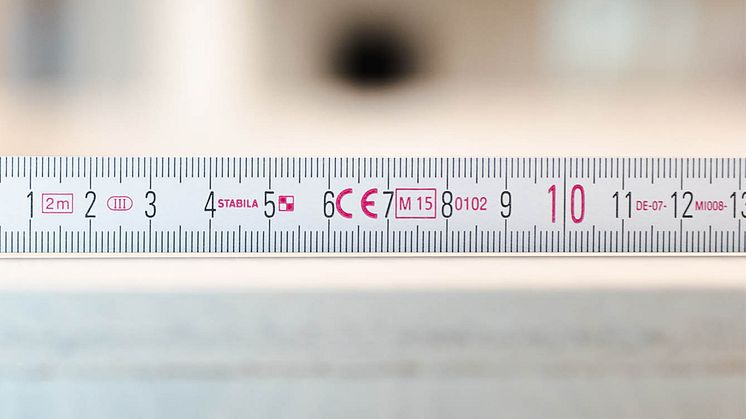
Blogginnlegg -
Keep up with standards
This autumn 2021 a revised version of EN 12464-1 is published, which sets requirements for Lighting of indoor work places. We met with Tommy Govén, Senior Designer & Adviser in Light and Lighting, and Klas Rejgård, Standard Specialist at Fagerhult, to learn more.
WHY A EUROPEAN STANDARD IN LIGHTING?
A standard, or a norm, is a document designed to set harmonized lighting requirements for different applications. It is a repeatable way of doing something, built on consensus among the different countries in Europe. This year the standard for lighting of indoor workplaces has been revised and published (EN 12 464-1 2021). We have taken a deeper look into the new updated guiding principles and met some of the people behind the document.
Tommy Govén has a long history of working in the field of lighting design and research focused on its impact on humans and has with his knowledge and passion contributed to the world of standardization. Today he is, among many other things, Project co-ordinator at CEN TC169 in Light and Lighting, responsible for the work behind EN12464-1.
The first standard on Lighting of work places was established in Europe and globally in 2001. The work started already in the early 1990’s, and Tommy Govén entered the first working group of CEN in 1995.
– Before that there were no common standard for Europe, all countries had their different protectionist views on lighting, with their own specifications for luminaires, Tommy Govén remembers. It was a difficult time being an exporting company, being forced to adapt to so many markets and requirements. The aim of the development of this first standard was to achieve a harmonized approach on lighting design for different applications and to harmonize lighting requirements in terms of illuminance, glare limits and other quality parameters in light and lighting. When the standard came into place, it also became easier to develop and export lighting products globally.
UNITING EUROPE
In 2002 a harmonized European standard was achieved, a breakthrough for the group – and for producing companies. During the years it has been revised twice 2011 and 2021.
Klas Rejgård, Standard specialist at Fagerhults Belysning, explains:
– Normally, you let the standard run for 5 years before revising. Then a request is made to all National Standardization Bodies NSB that are connected, if it is to be revised. Either you can keep it for another 5 years as it is or, if there have been updates - such as the LED shift and new outcome in research – the group can vote for it to be changed. If it is a standard that does not matter at all any more, it can be withdrawn.
– The standard must be applied as a set of requirements for which lighting design are to be met in different applications, says Klas Rejgård. When a reference to a standard is given in a procurement of an application, the minimum requirements given in the standard must be applied.

THE MAJOR CHANGES
So, what are the news in the updated standard? In short the following main areas have been altered in the revised document:
- The schedule of specific lighting requirements has been revised and improved.
- The recommendations given in the tables take user needs more into account.
- The impact of visual and non-visual effects of light on people's performance and well-being
- Requirements for walls, ceilings and cylindrical illuminances are improved and moved from the main text to the tables.
- A new chapter on design considerations gives advice on how to apply the requirements when designing lighting for visual tasks and activities within a space.
- Glare requirements have been clarified for improved usability.
- New informative Annexes have been added.
The revision have focused on the benefits for the humans using the lit-up space. The new standard emphasizes the ambient light and its effect on people working indoors. Research has stated that the brightness of the room affects us positively and enhances our ability to perform over time. It is a great improvement for the users perceived well-being at the work place.
The standard also contains revised and more comprehensive tables for different visual tasks. This in order to achieve a better and more efficient lighting solution, adapted to human needs within and around the work place. These modifications will impact the way we plan and procure in the future, therefore the new informative annex for better guiding is a great improvement. The annexes are new and give additional guidance for the lighting design and in planning of an improved ambient light in a clear and comprehensible way.
Klas Rejgård develops further;
– There is an entirely different focus on the requirements for the room brightness in the space, he says. A well-planned and thought-through lighting is highly beneficial for the people working there.
–Up to day standards mainly have focused on the horizontal lighting on workplaces, says Tommy Govén. But now the standard also give focus on the brightness of the whole space.
This gives requirements to design for improved illuminances on walls and ceilings. In specific working areas where people works for a longer time during the day, the illuminance requirements has generally been twice as high. Research has now proven that an improved room brightness is beneficial for our well-being, alertness and performance.
Another positive effect of increased ambient light in the space is that it also will reduce the impact of discomfort glare. With the new standard, we now have a method to calculate the ambient light in order to achieve an appropriate room brightness in different applications.

PUT IT INTO PRACTICE
In the updated standard the users’ different needs are better reflected. It also clearly states different requirements for the brightness of the room specified for what type of room it is, such as care unit, office or industry.
– A standard tells you what to achieve but not how to achieve the requirements. In order to give more guidance in the design process, various national guidelines are developed which gives additional recommendations regarding the distribution of lighting in the space and the requirements of energy efficiency, says Klas Rejgård. For example in UK we have the SLL lighting handbook and in Sweden we have “Ljus & Rum”.
Tommy Govén adds:
–Just as Klas says, we want to give an understanding of how to interpret the standard correctly. There are several ways to meet the requirements, but the design must be put into practice by someone who has knowledge and experience of lighting design in order for it to be well-perceived by people.
So, what does our friends in the standard group believe will be the next modification? What do they see in their fortune teller?
– I believe the next important subjects in light and lighting is to consider future research and knowledge within integrative lighting (Human Centric Lighting), as well as new methods for estimating glare and flicker, says Tommy Govén. Today a lot of research is on-going on these subjects. Already today a new EU directive has been launched in September 2021 giving new regulations for flicker (TLA) and stroboscopic effects (SVM). But I also believe, that in the future, you will surely use more luminance based design.
MORE INFORMATION
ISO, which is a global organisation in standardization covering countries and regions outside Europe, have just started the work to revise the standard ISO 8995-1: Lighting of indoor workplaces. This standard will be based on EN 12464-1:2021 and ready for publication in 2024.
FACTS - WHAT IS THE CEN?
The European Committee for Standardization (CEN), is the only recognized European organisation according to Directive 98/34/EC for adoption of European Standards in Light and Lighting.
The standards are created by all interested parties, such as manufacturers or consumers. By standardization, all parties gain increased product safety and quality, as well as lower transaction costs and prices.
A European Standard (EN) automatically becomes a national standard and is therefore included in the standards catalogue of CEN's Members (34 countries).
Text: Maria Vårenius
Photo: Patrik Svedberg, Dennis Boij

